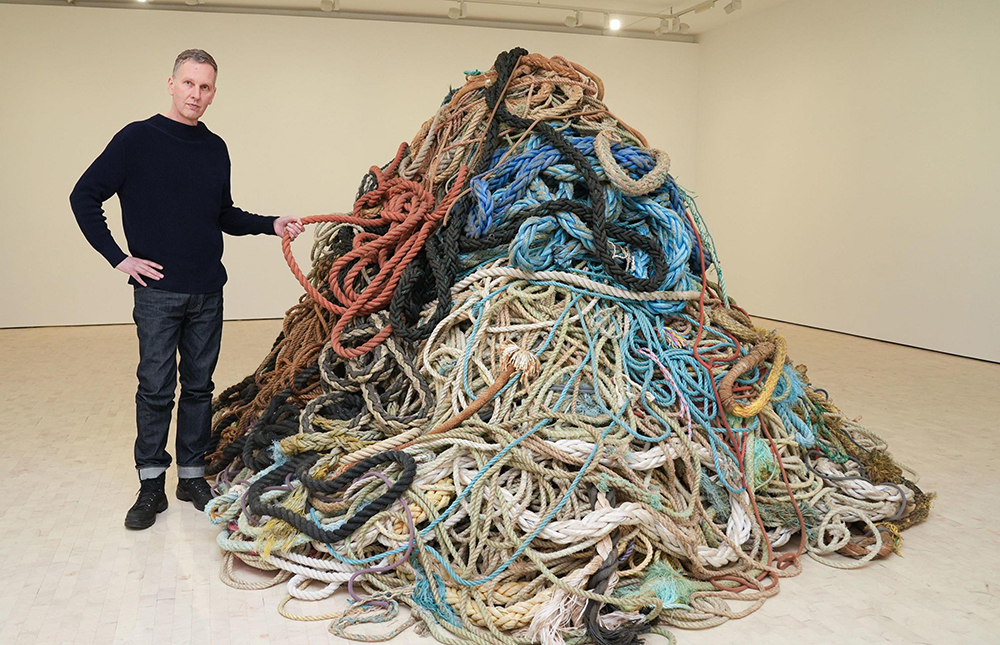2025 has been a year of quality over quantity and that can only be a good thing. Year on year it seems as though there are more albums being released to the point I'm drowning in new music. So it's refreshing to get to mid November and only have 43 albums in my list. Another noticeable thing from this year is the number of female fronted bands, or all female bands for that matter.
Artist David Shrigley has dumped 10 tons of old rope in a gallery and stuck a £1 million price tag on it. Nothing new here I hear you say, just another artist trying to fleece some daft rich person. This time, however, Shrigley is having a dig at the stupidity of the contemporary art market and for once I hope someone buys it.
Here’s a dirty little secret of the art world: a lot of the “big name” artists don’t even make their own work. Damien Hirst’s endless spot paintings weren’t painstakingly done by the man himself in some fever of creative genius. They were churned out by his minions. His diamond skull? Fabricated by specialists. His reputation? Built on branding and hype.
And Hirst isn’t alone. Jeff Koons doesn’t sit there polishing balloon dogs in his spare time. He’s got teams of fabricators doing the heavy lifting while he poses as a visionary. It’s the same story again and again — the bigger the name, the less paint actually touches their hands.
Remember NFTs? For about five minutes the art world was losing its mind over them. Galleries, celebrities, and tech bros all declared them the future. Artists were told if they didn’t mint their work on the blockchain, they’d be left behind. The hype was relentless with auctions selling pixelated clip-art for millions. Yet to most of us, it just seemed like a massive scam.
The first major NFT sale should have been a sign of the scam. Everydays: the First 5000 Days by Mike Winkelmann, AKA Beeple, was sold at Christie’s in 2021 for $69.3 million. The buyer, who paid in Ether (digital currency) was a founder of the Metapurse Project and along with the artist, was accused of driving up the price for publicity. Surely someone at Christie’s could see this was a scam?
Apparently, being famous now automatically makes you an artist. Jim Moir (Vic Reeves) doodles some birds, Ed Sheeran splashes paint like a hungover Jackson Pollock, Robbie Williams throws together some collages and suddenly they’re having gallery shows. Pete Doherty smears things in his own blood and it gets treated like high art. Ronnie Wood sketches his mates and it hangs on white walls.
Being a celebrity isn’t the only thing they have in common, their work is also not very good. Yes, I know, I sound bitter as these people have all had a leg up. Art is subjective, so you may like it as much as you dislike my work but let’s be honest, would any of this work be hung in a gallery if it wasn’t for who they are?
“I recently came across your Instagram page and was struck by your unique and surreal art style. Your paintings are full of imagination and creativity, and I can see that you take great pride in your work”. If you’re an artist then you’ve had an email with an opening line similar to this, followed by “We would love to exhibit your work in our [insert major city here] gallery”.
I’m talking about vanity galleries. The ones that charge artists hundreds (sometimes thousands) just to exhibit. At first, it might seem tempting: a chance to show your work in a city centre gallery, maybe even put the word “exhibited in Milan” on your CV. But let’s be real. If a gallery’s main income comes from artists paying to hang their own work, then it’s not a gallery, it’s a room painted white with delusions of grandeur.






